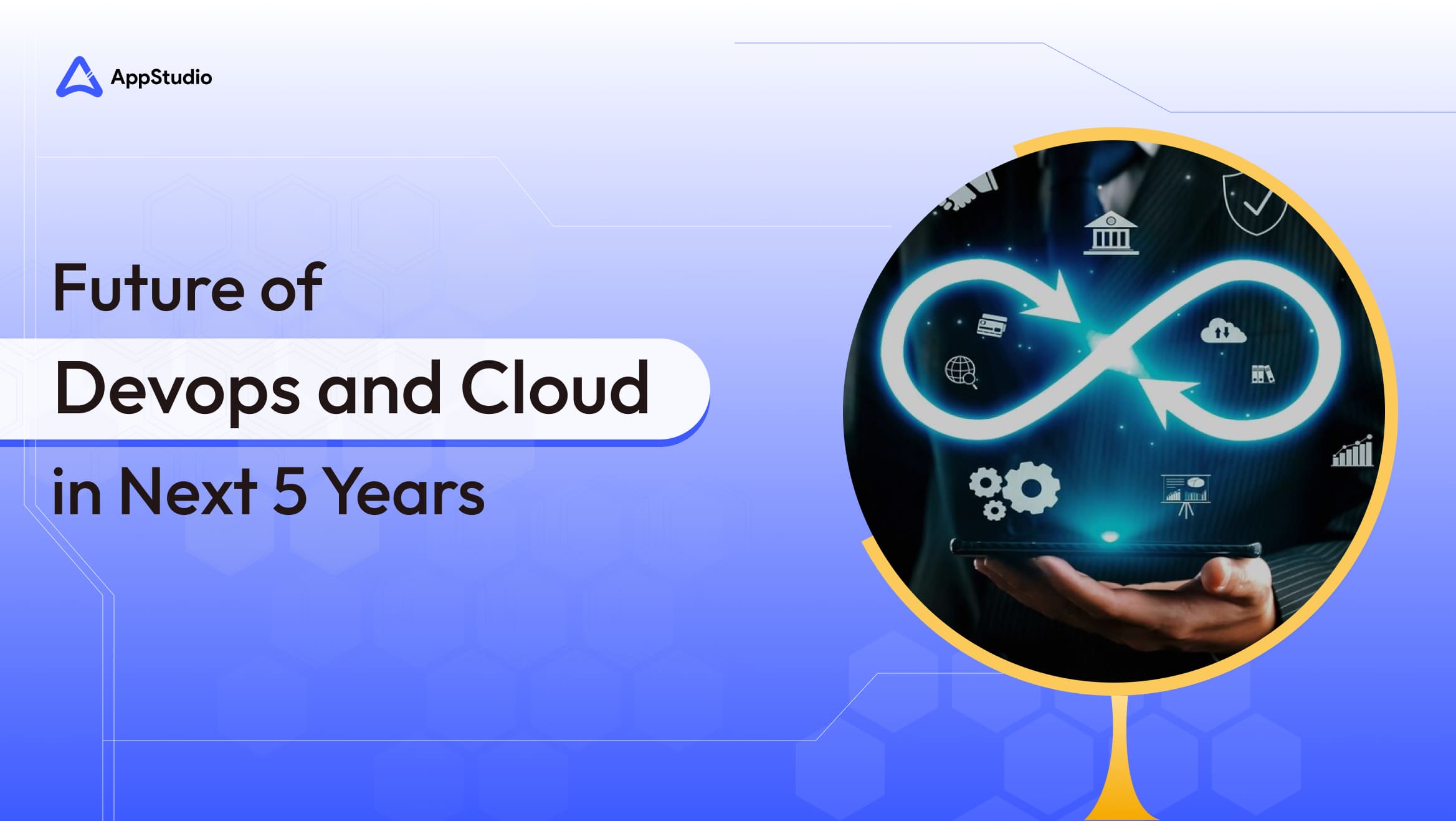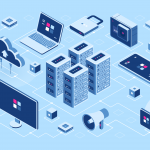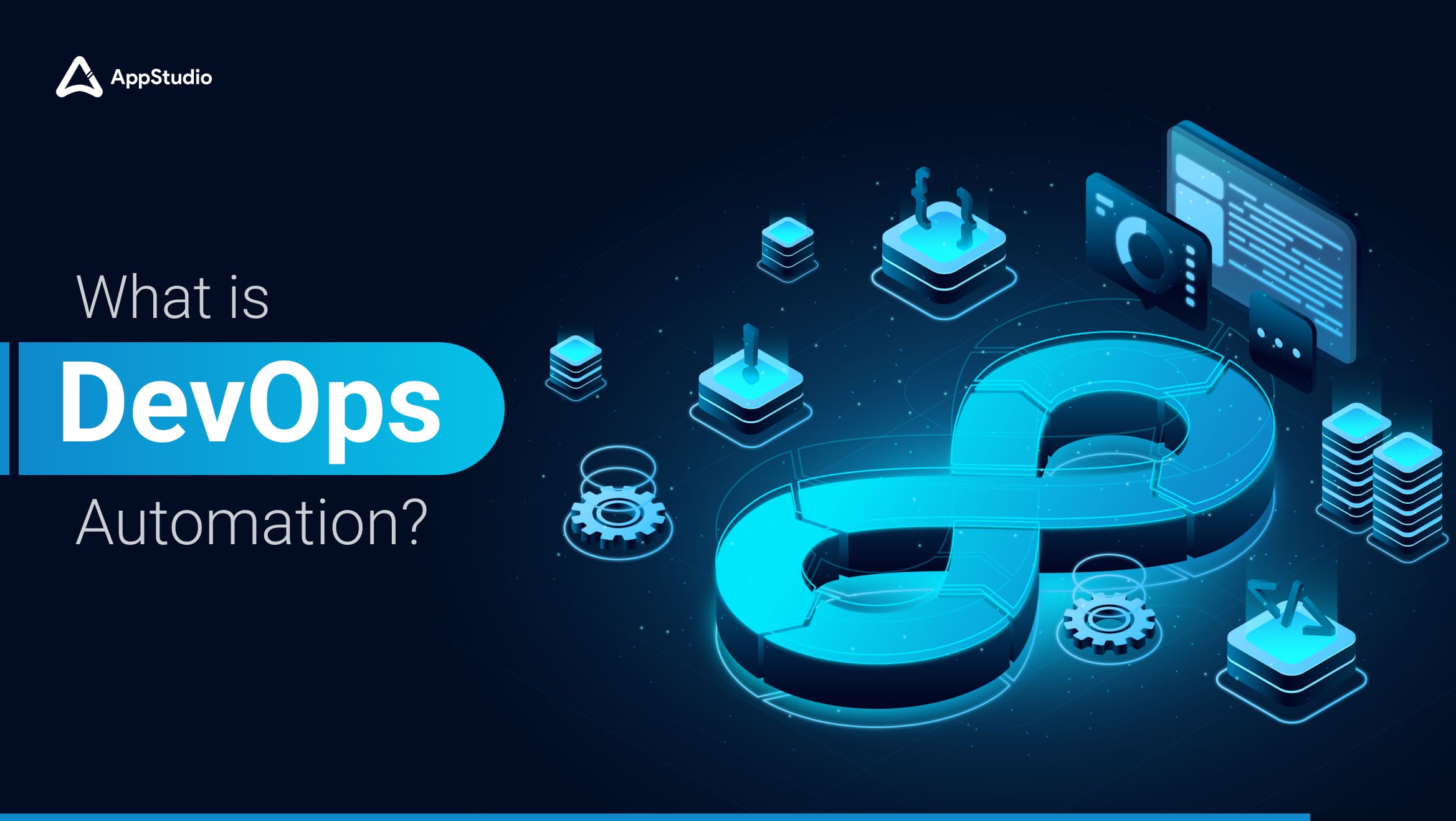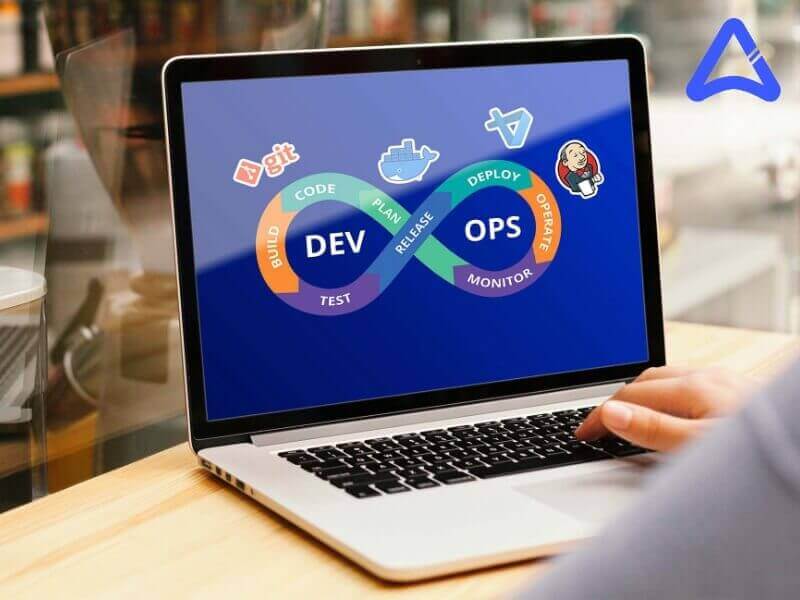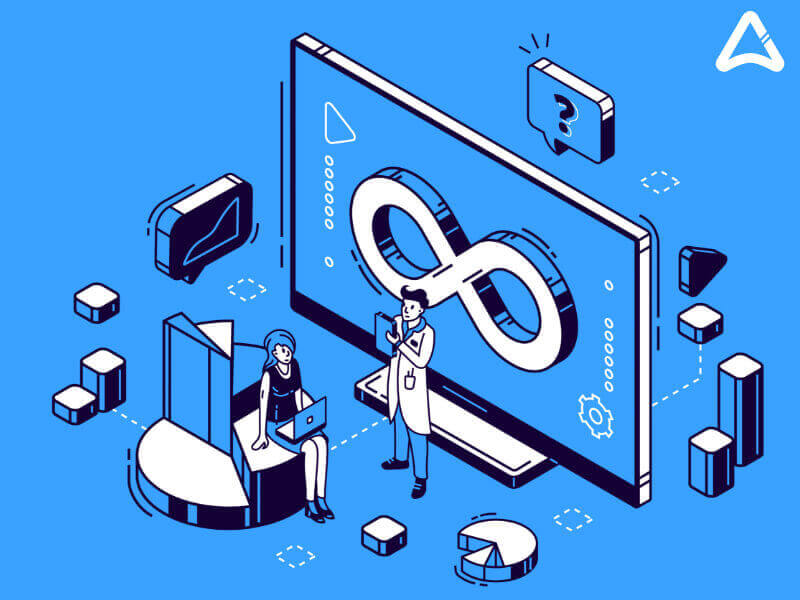What was once an idea led by a small group of practitioners has blossomed into a robust ecosystem of experts, vendors, and consultants, revolutionizing industries worldwide. A working pattern where collaboration between IT and operations teams isn’t just efficient but 100% seamless. That’s the reality DevOps integrated with the cloud has created. In just over 10 years, DevOps has evolved from a niche concept to a widespread movement that redefined how businesses operate. No longer confined to just a few early adopters, DevOps and Cloud have become the standard for managing everything from software development to a robust security phenomenon.
With the global market projected to reach $37.25 billion by 2030 at a growing 16.8% annual rate, the demand for improved collaboration between IT and operations teams continues to drive this rapid expansion. But you may ask, What’s left of DevOps and Cloud now? Isn’t that all?
Well, the future of DevOps is as bright as you can imagine, and this is just the beginning. This blog explores DevOps future, the future of cloud services, its upcoming trends, and more. Read more below.
Related reading: A Detailed Insight into the Devops Culture
What is DevOps?
DevOps is the integration of software development and IT operations into a unified framework where both teams collaborate to take joint responsibility for the development, deployment, and maintenance of an organization’s software systems.
In simple words, the core idea behind DevOps development is to break down the silos that traditionally separate two primary functions:
- Fostering a culture of collaboration where both developers and IT professionals share responsibility for the development, deployment, and management of software systems.
- Secondly, the goal is to streamline processes, improve the quality of software, and accelerate the delivery of new features and updates.
At its foundation, DevOps relies on a few key principles:
1. Cross-functional collaboration
2. Automation, and
3. Shorter development cycles
DevOps and Cloud Teams typically consist of engineers, IT operations experts, security professionals, software architects, and QA testers. These groups work together using various tools to foster cooperation across the software development life cycle, making the process smoother and more efficient.
Notably, automation plays a significant role in DevOps. By implementing continuous integration and continuous delivery (CI/CD), teams automate critical aspects of the development and deployment process. This essentially helps in minimizing human error, accelerates workflows, and ensures that testing and deployments are handled seamlessly.
Another important aspect of DevOps is its focus on shorter, iterative development cycles. Rather than working in lengthy, cumbersome release cycles, the role of DevOps encourages teams to break down large codebases into smaller, manageable parts. This allows multiple developers to work concurrently without disrupting the production environment, enabling faster and more reliable releases.
So overall, DevOps represents a strategic approach that enhances both the speed and quality of software development. By automating processes, embracing cross-functional teamwork, and shortening development cycles, DevOps practitioners can deliver high-quality software quickly and reliably, meeting the evolving demands of businesses and customers alike.
Related reading: DevOps: The Complete Guide to Understand DevOps Lifecycle
Top 8 DevOps Trends of the Future to Look Out for
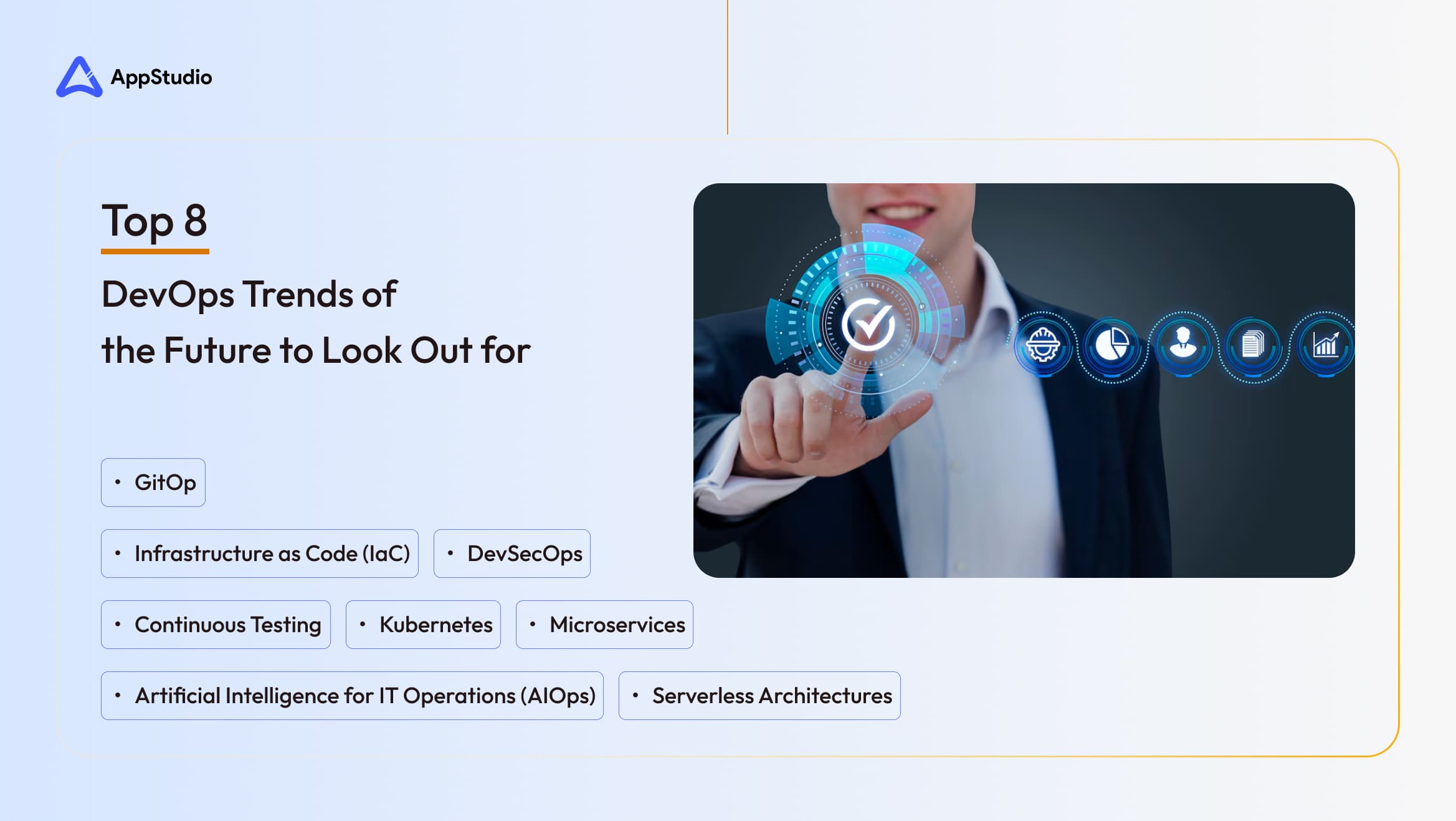
As we look ahead to 2024 and beyond, several key trends are poised to shape the future of DevOps landscape. These DevOps future trends reflect the ongoing evolution of development practices, driven by technological advancements and changing organizational needs. Here are eight unmissable DevOps trends to look out for:
1. GitOps
GitOps is quickly becoming the backbone of modern DevOps practices. By leveraging Git as the single source of truth for infrastructure and application configuration, GitOps enhances automation and collaboration.
The principle here is simple: if everything related to your environment is represented as code, then any changes to your infrastructure follow the same approval and review process as a regular code change.
For example, deploying a new environment or updating application configurations can be done by simply merging a pull request in Git, making infrastructure management smoother and more efficient. This eliminates the need for manual configurations and drastically reduces the chance of human error while improving traceability.
2. Artificial Intelligence for IT Operations (AIOps)
AIOps brings machine learning and AI to IT operations, helping teams manage the increasing complexity of modern applications. By processing vast amounts of operational data in real-time, AIOps tools can identify:
- Patterns
- Predict issues, and
- Automate resolutions.
For example, imagine a system detecting unusual traffic patterns and automatically scaling resources to manage an upcoming spike. This proactive approach significantly reduces downtime and boosts system reliability, which is crucial for enterprises managing large-scale applications where human monitoring alone isn’t enough.
If you’re intrigued by how AI and ML are reshaping IT operations, enrolling in an artificial intelligence and machine learning course can help you build the expertise to implement these technologies and drive innovation in your organization.
3. Infrastructure as Code (IaC)
Infrastructure as Code (IaC) allows developers to manage and provision infrastructure through machine-readable configuration files rather than through manual hardware configuration. This approach ensures consistency and eliminates configuration drift, making it easier to manage complex environments.
Tools like AWS CloudFormation are popular go-to(s) for implementing IaC. For example, a team can define its entire cloud infrastructure—including virtual machines, databases, and network configurations. This script can be versioned, reviewed, and deployed just like application code, ensuring that environments can be recreated identically across development, testing, and production.
4. Serverless Architectures
Serverless computing is changing the way applications are developed and deployed. In a serverless model, developers don’t need to worry about managing infrastructure; instead, they focus solely on writing code while the cloud provider handles the rest. This leads to quicker deployments and reduced operational overhead.
Services like AWS Lambda or Azure Functions are prime examples, where code execution is triggered by events such as HTTP requests or file uploads without needing dedicated servers.
5. DevSecOps
Security has become a critical factor in the software development lifecycle, and DevSecOps ensures that security is integrated into every step of the DevOps process. Rather than treating security as an afterthought, DevSecOps embeds security practices right from the start:
- During code development
- Through testing and
- All the way into deployment
Automated security scans and vulnerability checks are incorporated into CI/CD pipelines to identify potential threats before they become a problem.
6. Kubernetes
Kubernetes is revolutionizing the way teams manage containers, offering a platform to automatically deploy, scale, and manage containerized applications. With Kubernetes, infrastructure is treated as code, and containerized applications can be deployed consistently across different environments, from on-premises to the cloud.
An example of Kubernetes in action is how companies like Google and Spotify use it to manage thousands of microservices running in containers. Kubernetes ensures each service runs smoothly, scales automatically based on demand, and recovers from failures, ensuring high availability and reliability.
7. Microservices
Microservices architecture breaks down applications into smaller, independent services that communicate with each other through APIs. This allows teams to develop, test, and deploy individual components without affecting the entire application.
For instance, Netflix uses a microservices architecture to handle millions of users simultaneously, where different services like user accounts, recommendations, and streaming are managed independently.
This decoupling makes applications more resilient and easier to scale, as you can adjust individual services based on demand without disrupting other parts of the system.
8. Continuous Testing
As software development cycles grow shorter, continuous testing has become essential. Instead of waiting until the end of a development cycle to run tests, continuous testing ensures that testing happens throughout the process, ensuring code quality at every stage. Automated tests are triggered as soon as code is committed, providing immediate feedback to developers.
For example, a developer working on a new feature for an e-commerce development site can push their code, triggering a suite of automated tests that check for bugs, security vulnerabilities, and performance issues. This ensures that the code is production-ready as quickly as possible, improving the speed and reliability of releases.
Related reading: What Is The Importance of DevOps in Mobile App Development?
DevOps Transformation Over the Past Decade?
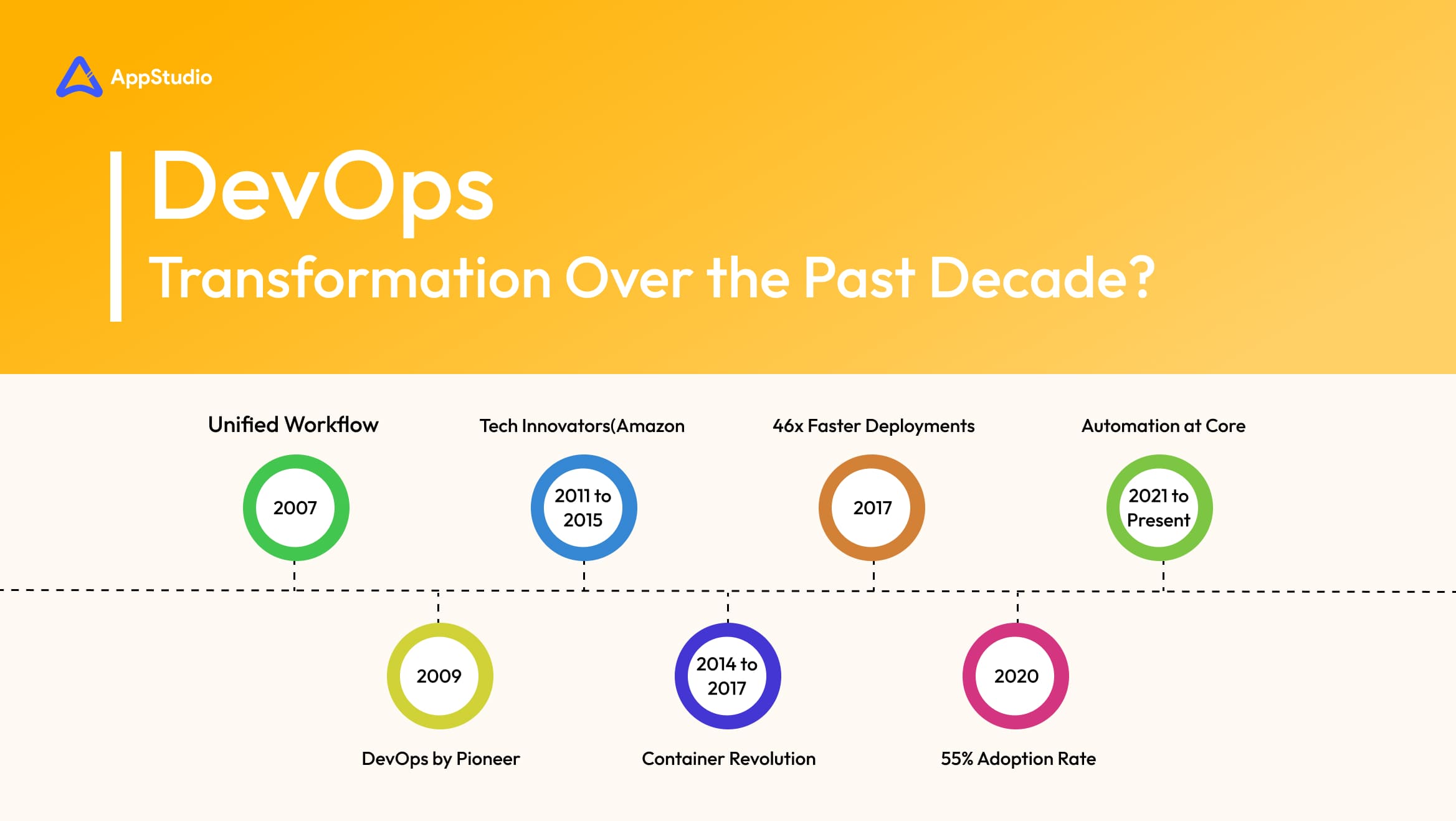
Over the past decade, DevOps has undergone significant transformation, evolving from a niche practice into a mainstream methodology that enhances software development and operational efficiency across various industries. Here’s a timeline overview of how DevOps and the cloud together have changed over the years:
DevOps Transformation Timeline Over a Decade
2007
DevOps concept emerged to improve collaboration between development and operations teams.
2009
The term “DevOps” was coined by Patrick Debois.
2011-2015
1. Early adoption by tech startups and giants like Amazon and Google.
2. Focus on streamlining software delivery and reducing deployment times.
2014-2017
1. Rise of containerization tools like Docker.
2. Emergence of orchestration tools like Kubernetes.
3. Continuous Integration/Continuous Delivery (CI/CD) pipelines became standard practices.
2017
The State of DevOps Report of 2017 survey indicated that high-performing IT organizations could deploy code 46 times more frequently than their lower-performing peers.
2020
1. Widespread adoption, with 55% of organizations reporting DevOps practices.
2. Shift from basic automation to optimizing the entire software delivery lifecycle.
2021- Present
1. Testing, deployment, and infrastructure provisioning automation became central to DevOps.
2. Netflix leveraged Spinnaker for automated deployments, enabling hundreds of daily releases.
Before the rise of DevOps and cloud services, the software development process was often fragmented. Developers were responsible for creating applications, while IT teams managed deployment and maintenance. This separation led to frequent friction due to conflicting priorities—app developers focused on pushing new features, while IT teams aimed to maintain stability, often causing delays and inefficiencies. Managing software updates, ensuring scalability, and handling infrastructure became time-consuming tasks that strained operations and hindered business responsiveness.
The introduction of DevOps and the adoption of cloud services revolutionized this process.
Cloud platforms provided scalable infrastructure on demand, eliminating the need for physical servers and allowing IT teams to manage environments more efficiently. While DevOps bridged the gap between development and operations, creating a collaborative environment where both teams shared the responsibility for ensuring smooth and continuous software operations.
With DevOps and cloud services working in tandem, the deployment of software updates that once took weeks or months now occurs in a matter of hours and even minutes. This agility allows businesses to quickly adapt to changing market conditions and customer needs.
Related reading: A Detailed Insight To DevOps Toolchain
Top Common DevOps and Cloud Challenges and Solutions
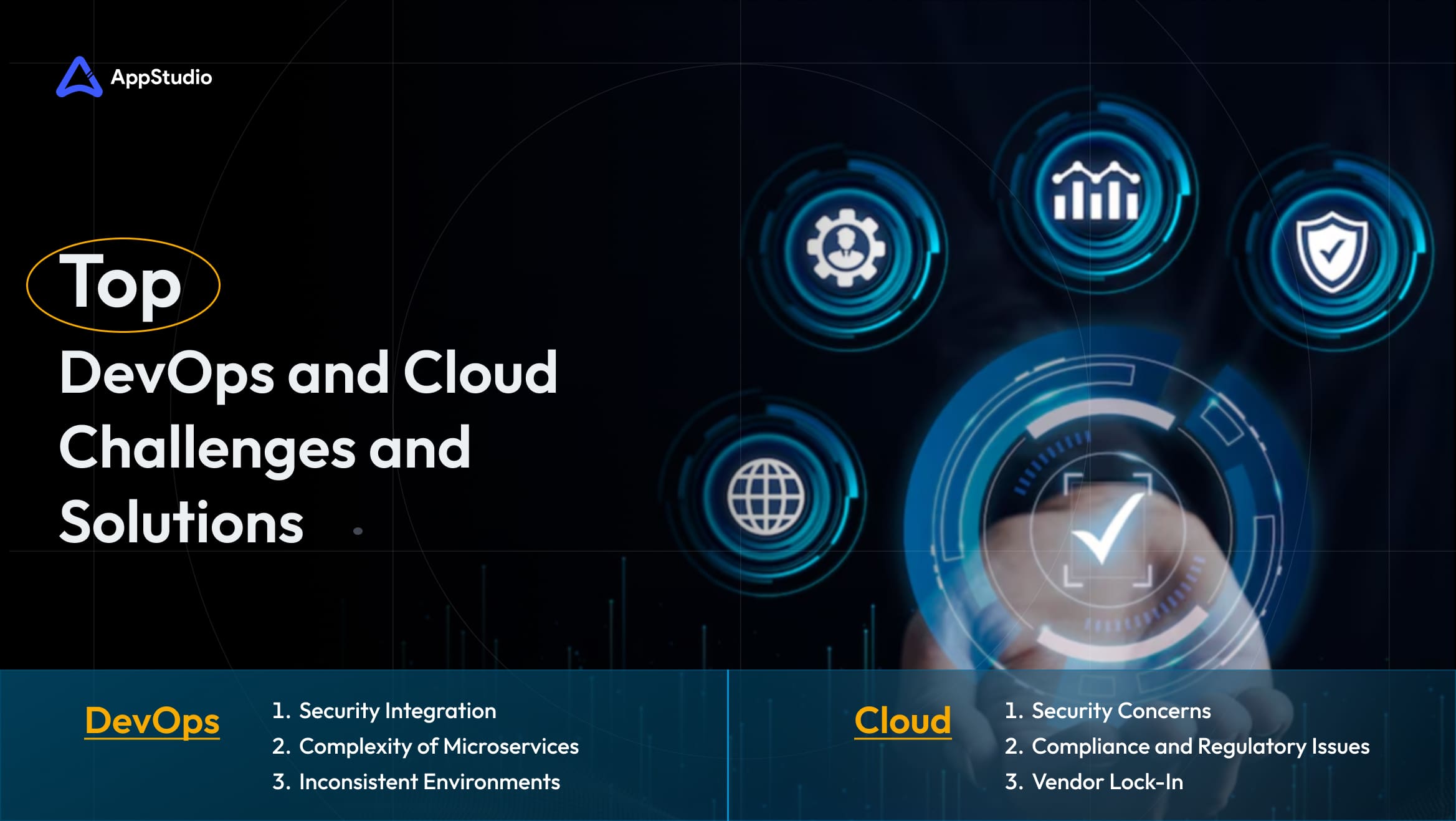
As businesses increasingly adopt DevOps and Cloud technologies, they encounter a range of challenges that can hinder progress. This section explores 5 common hurdles faced in both domains and offers actionable solutions to enhance efficiency and security.
DevOps Challenges and Solutions
1. Security Integration
Imagine delivering a new software feature, but security checks slow everything down, creating a bottleneck. This is a common issue in DevOps, where speed is king, but security often lags behind.
Challenge: Integrating security into the fast-paced DevOps workflow is tough, especially with frequent code changes that can introduce vulnerabilities.
Solution: Implement DevSecOps, where security is embedded throughout the development lifecycle. It ensures security checks are automated and integrated into each stage, reducing risks without slowing down the development process.
2. Complexity of Microservices
Consider your app as a giant jigsaw puzzle, with each microservice being a piece. The more pieces you add, the harder it becomes to manage. What’s the issue, you ask? Well, microservices, while flexible, can quickly turn into a web of complexity.
Challenge: Microservices break applications into smaller pieces, but managing communication between these pieces can become chaotic.
Solution: Use tools like Kubernetes or service meshes to manage the interaction between microservices. Such tools simplify managing complex architectures by automating service discovery, load balancing, and even security between services.
3. Inconsistent Environments
Ever deployed an app successfully in the test environment only to see it crash in production? Different environments can spell disaster when not aligned.
Challenge: Discrepancies between development, testing, and production environments often lead to deployment issues and bugs.
Solution: Use Infrastructure as Code (IaC) tools to ensure that all environments are identical. These tools automate infrastructure setup, making the process consistent across development and production, reducing the risk of errors during deployment.
Cloud Challenges and Solutions
1. Security Concerns
When moving to the cloud, your data becomes more vulnerable—like locking your valuables in a shared safe. You trust it’s secure, but how can you be sure?
Challenge: Storing sensitive data in the cloud makes it vulnerable to cyberattacks, especially when misconfigurations happen.
Solution: Strengthen your cloud security by using encryption, multi-factor authentication (MFA), and identity management tools. Regular security audits can help spot vulnerabilities early. Google Cloud’s built-in encryption services and AWS’s Identity and Access Management (IAM) are good examples of security-first practices.
2. Compliance and Regulatory Issues
Compliance in the cloud is like walking a tightrope—fall on one side, and you face penalties; fall on the other, and you risk security breaches.
Challenge: Staying compliant with regulations such as GDPR or HIPAA can be tricky when using cloud services.
Solution: Develop a strong compliance framework that includes regular audits and adherence to industry standards. Cloud providers like AWS and Microsoft Azure offer compliance certifications, making it easier for businesses to meet regulatory requirements.
3. Vendor Lock-In
Relying too much on one cloud provider is like putting all your eggs in one basket—if something goes wrong, you’re stuck.
Challenge: You have employed a single cloud provider, which may potentially lead to vendor lock-in, making it rather difficult to switch providers or migrate data whenever necessary.
Solution: Use multi-cloud strategies or open-source platforms like Kubernetes, which work across different cloud providers. This approach allows flexibility and minimizes the risk of being locked into one provider, giving you more control over your data.
Related reading: Why Cloud Computing is Important and How Cloud Computing Helps Business?
DevOps and Cloud: What to Expect in Next 5 Years?
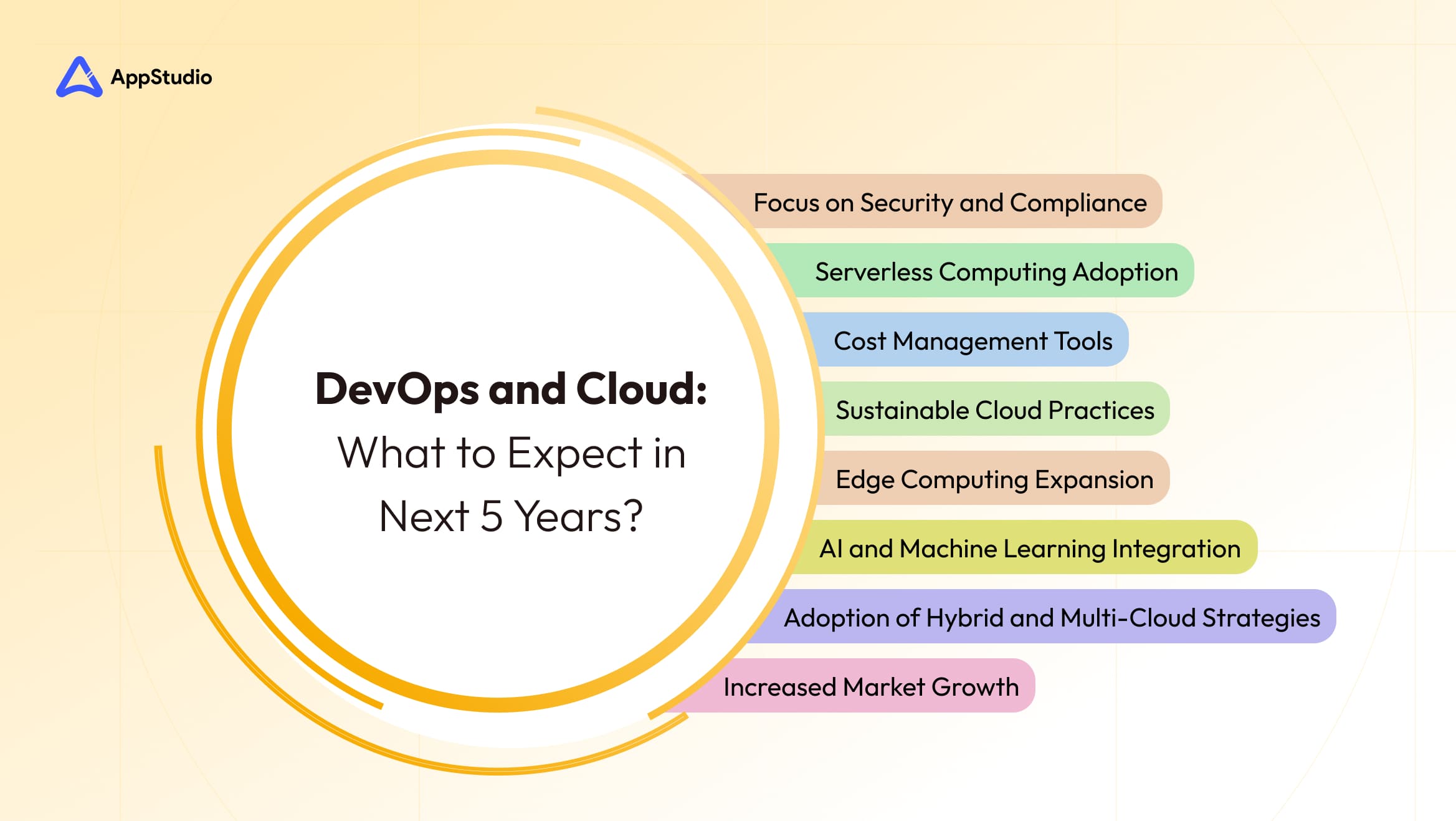
The future of cloud services and DevOps is on the brink of a revolution, transforming how businesses innovate and scale. In the next 5 years, the future scope of DevOps will evolve beyond automation, driving unparalleled agility and collaboration. As cloud computing future trends emerge, industries will harness cutting-edge technologies to reshape their infrastructures, and the future of cloud services will empower organizations with limitless possibilities. This is the dawn of a new era—where technology meets vision, and the digital workforce is forever transformed.
Here’s what the future trends hold beyond 2024:
1. Increased Market Growth
The cloud computing in market is projected to reach $1.44 trillion by 2029 and grow at a CAGR of 16.40%. This growth is fueled by the rising demand for cloud services across various industries, including big data, AI, and machine learning. This expansion means businesses that adopt cloud and DevOps early will be able to stay competitive and innovate faster than those that lag behind.
2. Adoption of Hybrid and Multi-Cloud Strategies
Organizations are increasingly adopting hybrid and multi-cloud strategies to enhance flexibility, reduce vendor lock-in, and optimize resource allocation. This approach allows businesses to leverage both public and private cloud services effectively. For example, a company might run sensitive data on a private cloud while utilizing public cloud services for non-sensitive workloads, allowing them to maximize performance while minimizing risk.
3. AI and Machine Learning Integration
There will be a significant rise in the integration of AI as a Service (AIaaS) within cloud solutions. This trend enables businesses to harness AI capabilities without the need for extensive infrastructure investments, making advanced analytics more accessible. By 2025, AI-powered cloud services will significantly enhance automation in DevOps, enabling predictive analytics for monitoring, self-healing systems, and faster development cycles.
4. Focus on Security and Compliance
As cloud adoption increases, so does the emphasis on security. Organizations will prioritize robust security measures to protect sensitive data in the cloud, with 94% of businesses reporting improved security after migrating to cloud environments. As the regulatory system evolves, particularly around data privacy (GDPR, HIPAA), businesses will need to implement more sophisticated cloud security strategies to stay compliant and avoid costly penalties.
5. Edge Computing Expansion
The deployment of edge computing will grow significantly, allowing data processing closer to the source. This reduces latency and enhances real-time decision-making capabilities, especially with the rise of IoT development. Over the next 5 years, edge computing will become more deeply integrated with cloud infrastructure, allowing businesses to harness the power of both edge and cloud for optimal efficiency.
6. Serverless Computing Adoption
Serverless architectures will gain traction as they allow developers to focus on writing code without managing server infrastructure, leading to reduced costs and increased scalability. For instance, Amazon’s AWS Lambda has already demonstrated how serverless can simplify application deployment and boost operational efficiency.
7. Cost Management Tools
With increasing cloud usage, managing costs will become a major concern for businesses. Cloud providers are expected to invest in developing tools that help organizations optimize their spending. Tools like AWS Cost Explorer and Google Cloud Pricing Calculator are early examples, but we can expect even more sophisticated solutions to emerge, helping businesses strike the right balance between performance and budget.
8. Sustainable Cloud Practices
There will be a growing emphasis on sustainable cloud computing practices as organizations seek to reduce their environmental impact, with significant growth expected in this area over the coming years. This will not only help organizations meet regulatory requirements but also appeal to environmentally conscious consumers.
Related reading: Top 3 Emerging Cloud Computing Features and Trends to watch
DevOps & Cloud: What’s in Store?
The landscape of DevOps and Cloud is continuously changing. As we explore the emerging trends, you might wonder about the future prospects of DevOps and Cloud. Here’s everything you need to know about what is shifting, the reasons behind these changes, their potential impact on you and your business, and why now is the perfect time to move forward.
What’s Changing?
The future of cloud services and DevOps is set to completely reshape the way businesses operate. Technologies like AI, edge computing, and serverless architectures are pushing the boundaries of what’s possible. These advancements aren’t just fancy buzzwords—they’re game-changers.
In the next few years, businesses will increasingly adopt hybrid and multi-cloud environments, combining the best of both public and private cloud setups. This allows them to stay flexible, scale operations efficiently, and even reduce costs while maintaining performance. The cloud computing future trends are all about blending innovation with practicality, making these shifts essential for modern businesses.
Why Does It Matter?
So why should you care? Whether you’re running a startup or managing IT for a large enterprise, making the move to cloud and DevOps isn’t just a nice-to-have anymore—it’s essential.
The future scope of DevOps offers businesses the ability to speed up development cycles, increase security, and make systems more scalable. In a world where customer expectations are rising and competition is fierce, having the ability to innovate quickly could make or break your business. Not to mention, cloud computing offers the flexibility to adjust resources on-demand, making sure you’re only paying for what you use—an immediate win for cost management.
How Will It Impact You?
Here’s where it gets interesting: these shifts aren’t just for the tech giants. The future of cloud services is more accessible than ever, meaning, businesses of all sizes can benefit. By embracing multi-cloud strategies, you’re not tied down to one provider, giving you the freedom to choose what works best for your business. This also means better security and resilience, as you can balance workloads and data across multiple platforms.
Serverless computing will allow developers to focus on writing great code without worrying about managing infrastructure, making your teams more productive. Plus, integrating AI and ML will let you automate processes, predict system issues before they happen, and ultimately, stay competitive in an evolving market.
Why Now Is the Time to Act?
The cloud computing future trends show that businesses that embrace these technologies today will have a massive advantage tomorrow. It’s not about just following trends—it’s about future-proofing your business.
If you want to remain competitive, grow, and innovate, the time to adopt DevOps and cloud computing is now. By making this shift, you’ll be positioning your business to adapt quickly to market demands, stay secure, and efficiently manage costs. Whether you’re just starting out or already have a foothold in the industry, ignoring these changes is not an option—embrace the future or risk falling behind.
Related reading: Cost of Developing A Social Media App Like Threads
Takeaway!
As discussed above, by making this shift and adapting to the top trends of DevOps and Cloud, organizations can grow exponentially by responding quickly to market demands, staying secure, and efficiently managing costs. To tap into these trends effectively, partnering with experts is crucial. That’s where AppStudio offers expert DevOps & Cloud services that can help you fully optimize your digital platforms to leverage cloud and DevOps capabilities.
With AppStudio’s help, businesses can enhance their website’s performance by seamlessly integrating these technologies and create engaging, intuitive user experience that convert visitors into loyal customers. Whether you’re scaling your infrastructure or speeding up development cycles, AppStudio is what you need that aligns with your digital strategy alongside the evolving needs of the market and the future.
Frequently Asked Questions
DevOps is a methodology that integrates software development (Dev) and IT operations (Ops) to improve collaboration, automate processes, and deliver software faster and more reliably.
DevOps and the cloud complement each other by providing scalable infrastructure through the cloud, while DevOps automates and streamlines development, deployment, and operations processes.
Yes, cloud and DevOps are key to the future of IT, as they enable faster innovation, flexibility, and scalability, allowing businesses to adapt to rapidly changing market demands.
In 10 years, DevOps will be heavily integrated with AI and machine learning, advancing automation, predictive analytics, and continuous improvements in development and deployment processes.
Absolutely, by 2025, DevOps will remain essential as businesses continue to prioritize automation, faster delivery cycles, and efficient collaboration between development and operations teams.
By 2025, cloud computing will be even more advanced with the widespread adoption of hybrid and multi-cloud strategies, serverless architectures, and stronger security frameworks to meet growing business demands.
